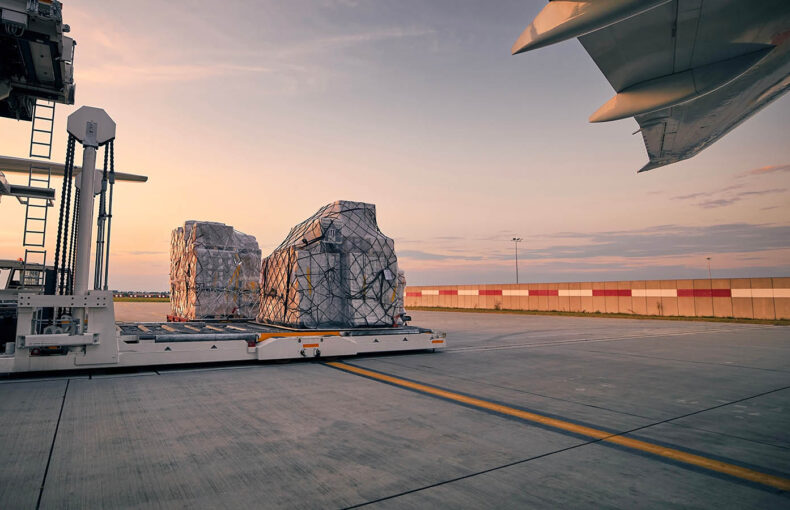Unclouding aviation security: The growing threat of GPS spoofing
Global Navigation Satellite Systems (GNSS) like GPS have become integral to our daily lives. These systems help us navigate the quickest route to work or find a nearby restaurant. But what happens when these signals are tampered with?
Malicious actors use GPS jamming and GPS spoofing to hide their activities—whether it’s illegal fishing at sea or dark shipping to avoid detection. These same threats now impact the skies, putting commercial aviation at risk.
What is GPS jamming and spoofing?
- GPS jamming happens when a device sends out signals that interfere with those from GPS satellites, disrupting navigation systems.
- GPS spoofing is more dangerous. It sends false GPS data to an aircraft, with the goal of tricking the aircraft into thinking it’s in a different location.
Both tactics are increasingly used in and around conflict zones, especially in the Middle East and Eastern Europe. Planes in these regions are losing access to reliable navigation data, which can render systems like autopilot and GPS-based navigation unusable—sometimes even steering flights off course.
Why is this a growing concern for aviation?
Hundreds of flights worldwide are experiencing GPS spoofing daily, putting pilots and passengers at risk. When a plane loses its GPS signal or receives false location data, the margin for error for being able to locate itself widens. This has the potential to be catastrophic in high-traffic airspace or near sensitive military zones. As GPS signals degrade, a plane’s ability to transmit its location accurately decreases, raising the risk of straying into no-fly zones. Luckily, flights have fallback systems, but they’re often less reliable than GPS.
How does GPS jamming impact aviation?
GPS jamming typically happens when planes fly over conflict zones, near military areas, or around sensitive government installations. The jammers on the ground send out stronger signals, overwhelming GPS satellites. As a result, planes can lose their geolocation data, potentially flying off course or near dangerous airspace without realizing it. Often, this degradation in signal cause pilots to rely on.
Several incidents have already been recorded, with aircraft nearly entering restricted airspace like that over Iran. In these cases, the plane’s systems may fall back on onboard backups like the Inertial Reference System (IRS), which can operate without external GPS signals. While this helps with GPS jamming, it’s not foolproof—especially when spoofing comes into play.
The bigger threat: GPS spoofing
GPS spoofing is even more dangerous because it sends fake GPS data to the aircraft. Planes may unknowingly follow incorrect routes, flying off course. In the last 8 months, commercial aviation has seen a sharp increase in spoofing events over the Middle East and even in Polish airspace.
When spoofing happens, the plane’s Inertial Reference System (IRS) tries to verify its position using the spoofed GPS data, often failing to detect the manipulation. Unlike jamming, which simply blocks the signal, spoofing actively misleads the aircraft’s navigation system.
How planes detect GPS spoofing:
- Sudden Jump in Estimated Position: Planes might see their location jump tens of miles away in seconds.
- Dead Reckoning: With GPS gone, the plane’s systems switch to estimating location based on speed and direction—similar to how ships navigated before GPS.
- Clock Skew: Spoofing can throw off the plane’s onboard clock, adding confusion to an already dangerous situation.
Why does GPS spoofing matter?
Commercial flights aren’t just losing accurate geolocation—they’re at risk of entering no-fly zones or restricted airspace without realizing it. The risks are particularly high in areas near military zones or conflict regions where jamming and spoofing are prevalent.
As the graphic below shows, a lowered GPS quality rating, shown by the NIC value quickly makes it harder to precisely determine an aircraft’s location.
What can be done about GPS spoofing?
To combat these threats, organizations like Spire are using advanced Radio Frequency Geolocation (RFGL) technology to help authorities identify and locate bad actors on the ground. While aircraft systems like the IRS can provide some backup against GPS jamming, there’s still no more comprehensive solutions for GPS spoofing at the moment. Spire Aviation is addressing this gap in aviation with the EURIALO program. Using the RF signals, Spire’s satellites will provide data to ground-based systems that can accurately determine the position of any aircraft. As several satellites receive the same aircraft signal, the intersection point is calculated from the different signal transit times between the aircraft and the various satellites. The position of the aircraft can thus be reliably and accurately determined, independent of GNSS. This information is then relayed to the ground infrastructure to assist air traffic control in monitoring and managing air traffic.
As we see an uptick in GPS jamming and spoofing, especially in conflict areas, it’s essential for aviation to adopt better safeguards and monitoring systems to ensure the safety of passengers and crew.
 Written by
Written by


